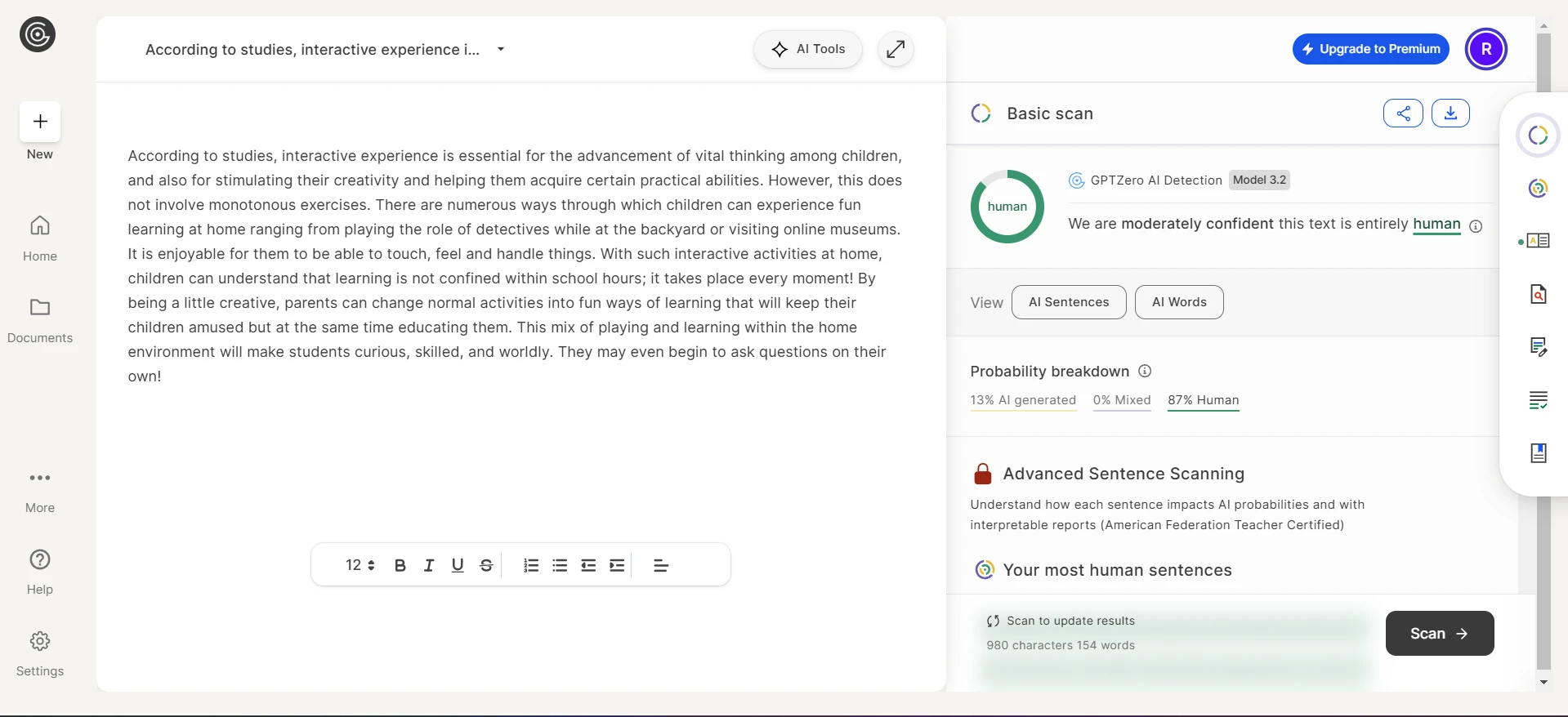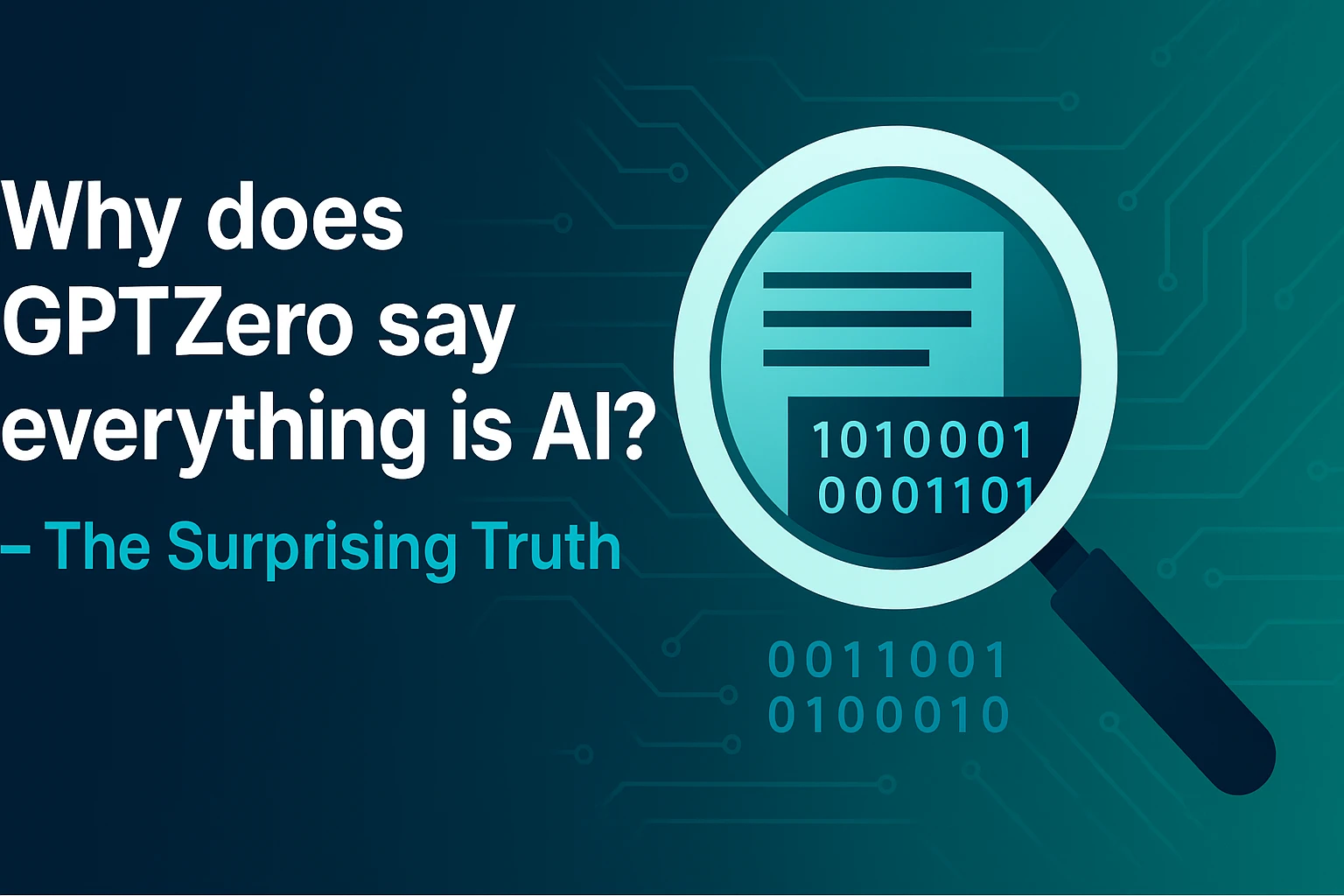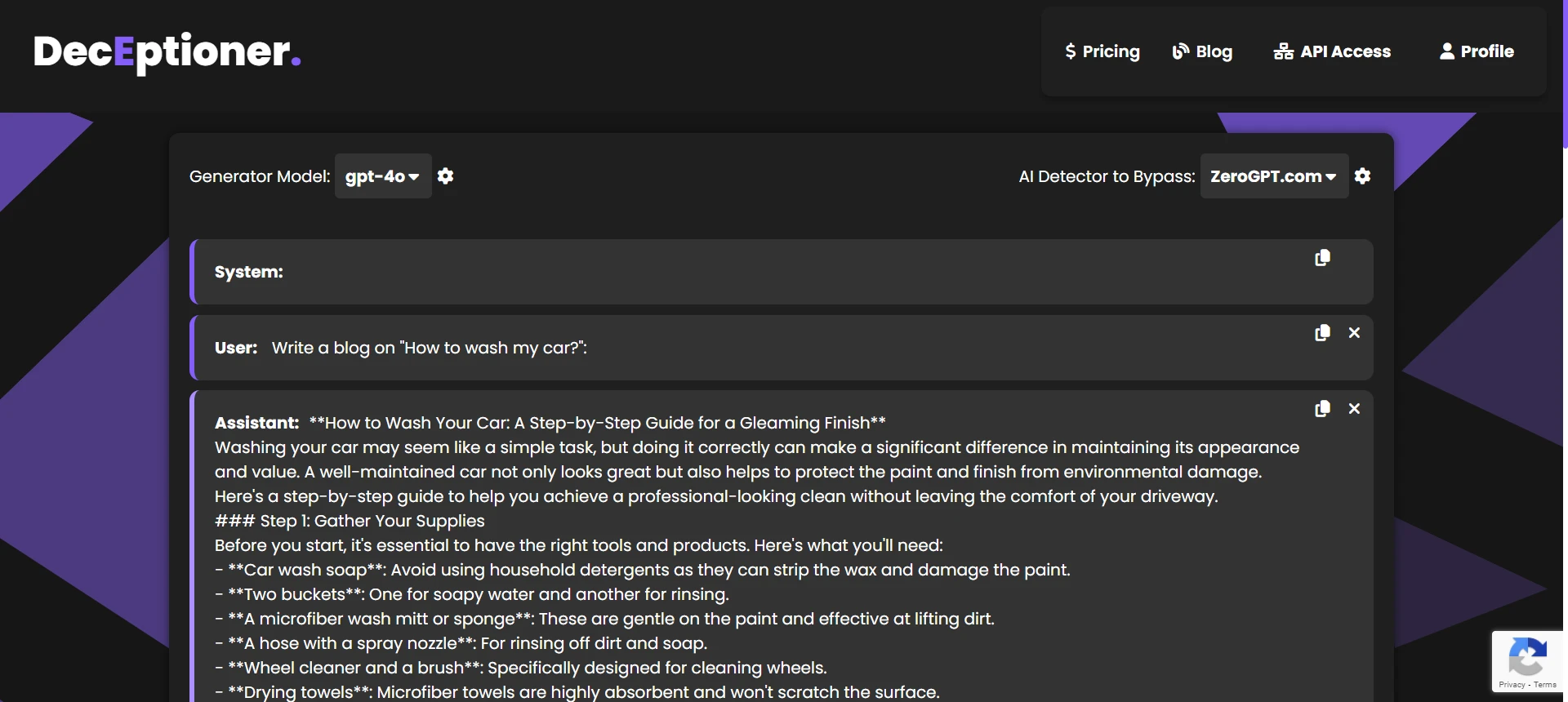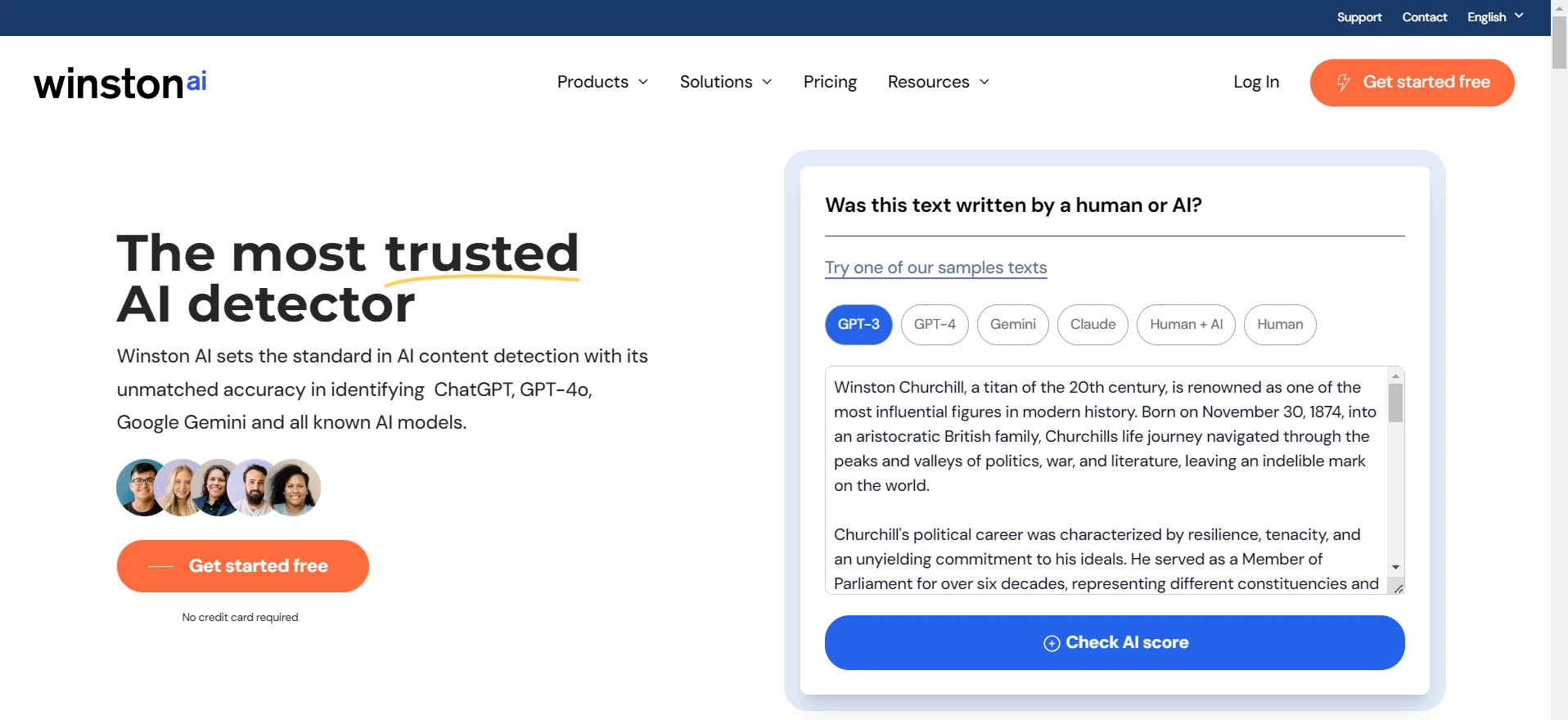The short answer is it’s not built to let everything slide under the radar. The longer answer is that the devil lies in the details. Keep reading to know more about it.
Why does GPTZero say everything is AI?

GPTZero.me’s Model 3.2b update, which happened on March 4, 2025, changed a lot of things. Before this major update, GPTZero was somewhere around 88.75% accurate in detecting AI-generated text. However, after this update, it started flagging practically anything and everything as AI. So, if you are using Grammarly or Quillbot’s grammar checker, you’ll get flagged because these tools themselves rely on AI recommendations.
Just like any other AI detector, GPTZero is not perfect. It is an end-to-end deep learning system for text analysis but it still can’t boast 100% accuracy. Ironically, it tends to misclassify some ChatGPT outputs as human-written while also catching some completely human-crafted text as AI. Let’s dive deeper.
Also Read: Can GPTZero detect Deepseek?
What do the numbers say?
You might question: “Is GPTZero actually good at labeling AI content or is it just going crazy and labeling everything AI?” Well, let’s look at the facts and figures from a test of 160 texts (78 human-written and 82 ChatGPT-generated):
- Overall accuracy: around 88.8%.
- 5.1% false positives for human text: Only 5.1% of true human texts were incorrectly classified as AI.
- 17.1% misclassification for AI texts: Nearly 17.1% of AI-written texts were mistakenly marked as human.
- Confusion matrix: 74 out of 78 human texts were correctly labeled human; meanwhile, 14 out of 82 ChatGPT outputs were incorrectly flagged as human.
So, you see there is a bias toward calling text "human". This is surprising, especially now that GPTZero says everything is AI. The "everything is AI" phenomenon you’re seeing might be due to the fact that whenever it detects anything resembling an AI pattern, it just lumps it under "AI"—especially if it sees that the text has been heavily polished by AI-based grammar correctors. If you want to get around this situation then you can try our tool deceptioner with the "GPTZero.me" mode.
Key metrics you need to know!
Below is a quick reference table summarizing the core performance metrics:
| Key Metrics | Value |
|---|---|
| Overall Accuracy | 88.75% |
| Human Detection (Precision) | 84.09% |
| Human Detection (Recall) | 94.87% |
| Human Detection (F1 Score) | 89.16% |
| AI Detection (Precision) | 94.44% |
| AI Detection (Recall) | 82.93% |
| AI Detection (F1 Score) | 88.31% |
In a nutshell:
- High Accuracy: Accuracy is quite high when considering plain text.
- Low false positives: GPTZero rarely flags human content as AI (only about 5.1%).
- False negatives: It occasionally marks AI text as human (about 17.1% of the time).
How GPTZero works under the hood
To understand why it’s flagging so many things, we need to see how GPTZero operates. GPTZero is not just an off-the-shelf model. It’s an end-to-end deep learning system that incorporates:
- Stylometric Analysis: GPTZero checks your text for writing style, vocabulary usage, and sentence complexity. AI writing often has lower perplexity and burstiness scores. If it sees extremely consistent grammar and style, it might ring the "AI" alarm.
- Machine Learning Models: GPTZero has been trained on both human and AI-generated text. It looks for subtle differences that might be invisible to casual readers but are recognized by machine learning. So, if your text is too "perfect", it can get labeled as AI.
- Text Coherence Checks: It evaluates the logical flow and idea transitions. AI text sometimes has weird leaps or repetitive structures. If GPTZero spots patterns typical of LLMs, it might drop the "AI" hammer.
- Statistical Profiling: GPTZero leverages perplexity, burstiness, and other metrics. If your text hits certain thresholds, it will raise a red flag.
- Sentence-by-Sentence Classifier: GPTZero uses a specialized classifier that goes line by line. Each sentence is evaluated for “AI-likeness” or “human-likeness”, producing a final combined decision.
- Paraphraser Shield: GPTZero has a new feature that specifically tries to detect if you used paraphrasing tools or changed letters with homoglyphs. This means if you do simple rewriting with Quillbot or Grammarly, GPTZero might assume you’re trying to fool it—thus labeling you AI.
But after the March 4, 2025 update, GPTZero’s sensitivity soared. In other words, if it sees anything that looks processed by AI, it lumps it under the "AI" category.
What about “mixed-content” and confidence ratings?
Mixed-content & Confidence Ratings: GPTZero can even highlight sentences that it thinks are AI-generated while calling the rest of the text human. They introduced the first sentence-highlighting model using Hidden Markov Models (HMM), which was showcased on Anderson Cooper 360. According to their own data, GPTZero boasts a 96.5% accuracy rate when dealing with mixed-content documents.
Additionally, GPTZero’s output dashboard doesn’t just say "You are AI". It also provides confidence ratings like "uncertain," "moderately confident," and "highly confident". For "highly confident" predictions, GPTZero claims the error rate is under 1%. That’s impressive, but it also leads to more flagged content if the threshold is set too aggressively.
One single opinion that might help you
In my personal opinion, GPTZero is a decent first pass tool for quick, low-risk checks. However, if you’re in a high-stakes scenario (like academic submissions or legal matters), relying solely on GPTZero might get you in trouble because:
- 11% misclassification rate is not negligible.
- Human reviewers or other detectors can second-check questionable texts.
Frequently Asked Questions
Q1. Why is GPTZero not 100% accurate?
Because it uses a combination of methods that can produce false positives and negatives. Machine learning models aren’t flawless, and GPTZero has a slight bias toward labeling texts as human. Strangely, with the new update, it is also labeling many "grammar-checked" texts as AI.
Q2. Are these metrics complicated to interpret?
No, they are actually pretty straightforward. If GPTZero has high precision in detecting AI, it means it rarely mislabels human texts as AI. And if it has high recall in detecting AI, it means it catches most AI texts. Combine them, you get the F1 score, which is a balanced measure of both precision and recall.
Q3. Why do I still get flagged if I wrote the text myself?
GPTZero has become extremely sensitive after the Model 3.2b update on March 4, 2025. It is possible that your text might have too many AI-like tokens or patterns, especially if you used grammar suggestions from AI-based tools like Grammarly or Quillbot, etc.
Q4. Can GPTZero handle multiple file formats?
Yes, GPTZero supports various formats including plain text, DOCX, PDFs, and even image files (like OCR-based checks). It can process up to 50 files in one go.
Q5. Can we avoid GPTZero detection altogether?
There’s no guaranteed way if GPTZero is set to maximum sensitivity. However, some people try using advanced paraphrasers like our tool Deceptioner with the "GPTZero.me" mode. They claim it helps you not get flagged, but it’s not a silver bullet. Manual rewriting with inconsistent style sometimes works, but it can be time-consuming.
The Bottom Line
GPTZero says everything is AI because it is intentionally tuned that way, especially after its 3.2b update. It tries to err on the side of caution in detecting AI patterns. This means it will flag innocent texts—like those edited by AI-based grammar tools—because they appear too "perfect" or too "uniform".
However, GPTZero is pretty effective when you’re dealing with low-risk filtering or quick checks. Just remember, it has an ~11% misclassification rate, so you definitely want to add your own judgement or use other tools when you’re in high-stakes scenarios.
Remember, if you’re looking for ways to avoid being flagged by GPTZero, you can consider using our tool Deceptioner with the "GPTZero.me" mode, or you can reintroduce some natural inconsistencies in your text. And if you’re serious about not getting flagged, you should also avoid using AI-based grammar checkers altogether or find a way to mask their footprints.
At the end of the day, GPTZero is not an all-knowing entity. Its usage of stylometric analysis, machine learning, text coherence checks, and paraphrasing detection might scare some people, but it still isn’t bulletproof. The cat-and-mouse game between AI generation and AI detection will likely continue. For now, always factor in some margin of error and a bit of common sense if you’re relying on GPTZero.


![[G0] Can GPTZero Humanize AI Text?](/static/images/can-gptzero-humanize-ai-textpng.webp)
![[HOT TAKE] Why is ZeroGPT so bad?](/static/images/why-is-zerogpt-so-badpng.webp)
![[DIRECT] Best Affordable AI Humanizers (That Still Work in 2025)](/static/images/best-affordable-ai-humanizerspng.webp)
![[HOT] Can You Compare ZeroGPT With Other Top Tools?](/static/images/can-you-compare-zerogpt-with-other-top-toolspng.webp)





